I made this cap as my second ever Blackwork project, many decades ago.
At the time I made this, I was not taking much notice of what headwear went with the early 16th century German clothing I was starting to wear! All my focus was on expanding my new embroidery skills and making something I would enjoy wearing.

These days I do wear appropriate headwear for my chosen time, and I now keep this coif as a decorative piece.
Research and Design
In the days before the internet, access to resources were limited. I had bought and borrowed several books on blackwork embroidery, including Blackwork (Gostelow 1976) and Blackwork Embroidery (Geddes & McNeil 1976).
These books included examples of blackwork coifs, sometimes unpicked to show the embroidery detail – and the shape before construction. These days we have online access to images of these pieces, in all their glorious detail.
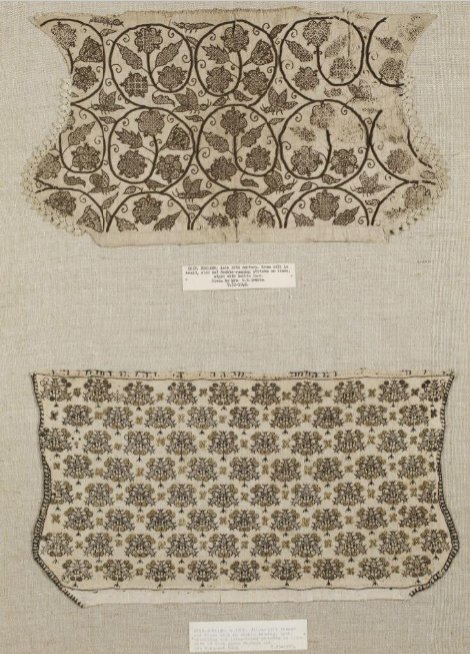
Source: V&A Museum

Source: V&A Museum
They also include many other examples of clothing and furnishings with counted infill decoration, which really appealed to me.

Source: Wikimedia
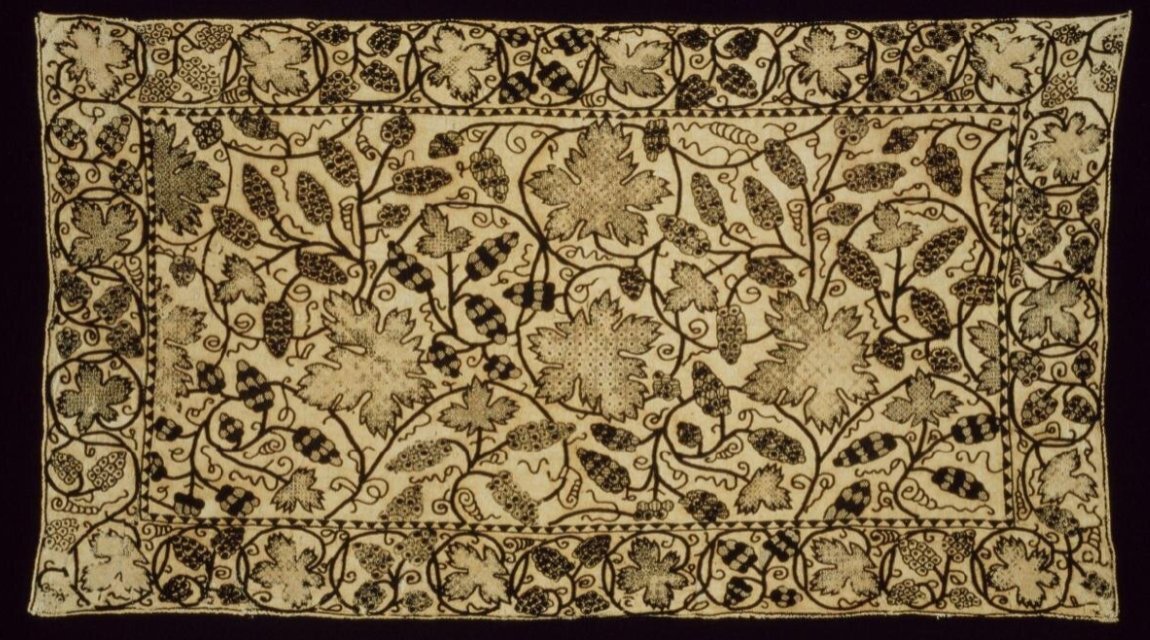
Source: V&A Museum
Based on these images, I decide to make a blackwork coif, decorated with coiling vines and using the many fill patterns I saw on Elizabethan coifs, sleeves and other linens.
Construction
My first step was to work a sampler, to test the density of the different stitches. I charted stitches from the extant examples in the books, and from the fill patterns they detailed and worked them as a chessboard – my first piece of Blackwork!

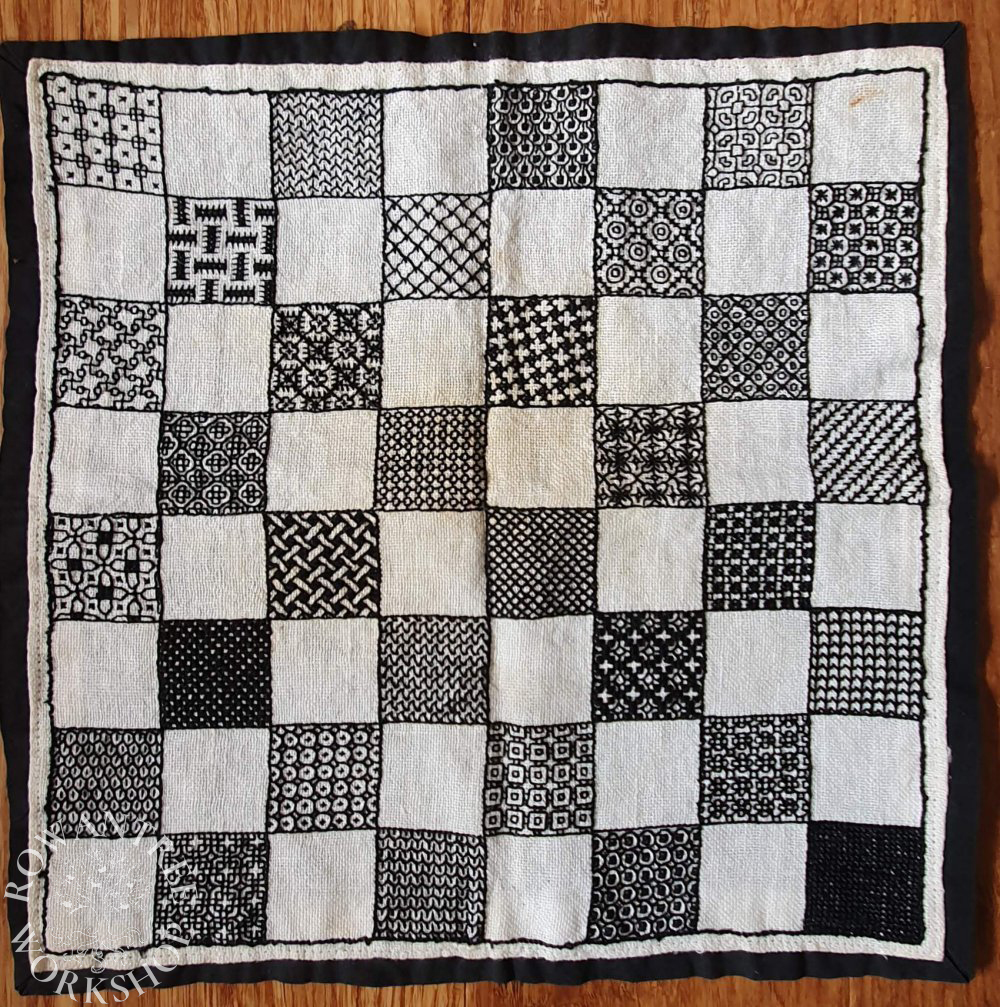
I made a coif pattern based on the flattened extant examples, and tested this in scrap fabric. I drew up a design that adapted these examples, within the classic scrolling vine layout, using the shapes typical of the style – leaves, flowers, fruit and so on.
I drew the outlines of the design onto evenweave linen in pencil – the same 28 count linen I had used for the chessboard, then basted the coif outline. Since I had not yet learned about Braid stitch, I worked the solid stems in Heavy chain, using black pearl cotton, with the smaller tendrils in simple Chain stitch.
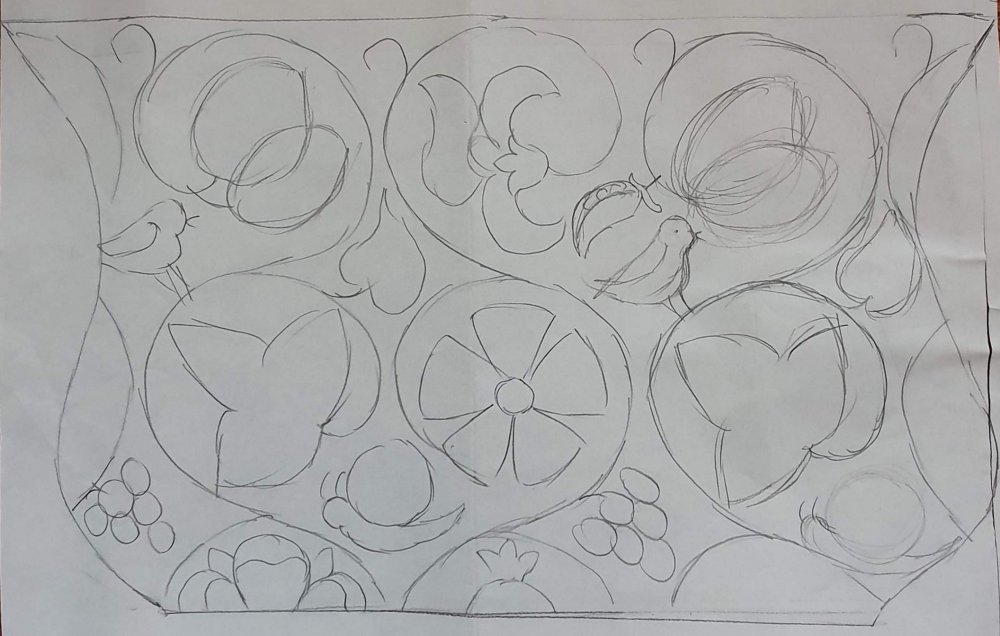
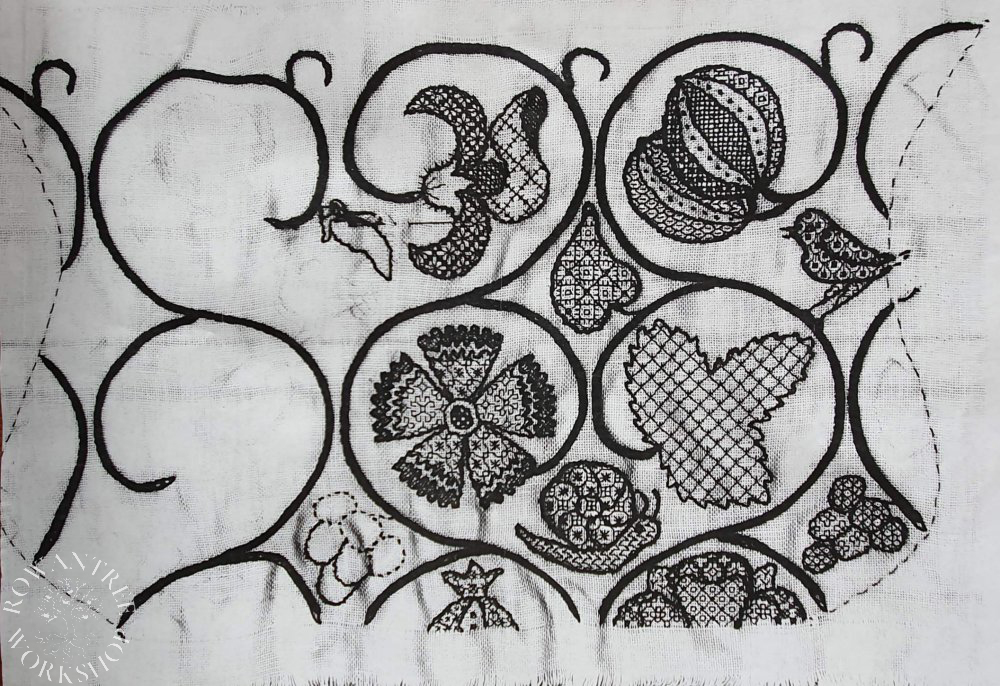
I outlined the designs in Holbein stitch, then worked the fill stitches in black silk using a wide variety of techniques, including Holbein stitch, Backstitch, Eye stitch and French knots, drawing on the sampler to choose appropriate patterns. All the work was done in the hand, not in a frame. Since I did not have access to real spangles, I sewed gold sequins in the gaps to finish the look.
I lined the cap with plain linen, to reduce wear and hide all the ends. Because I had only seen flat (unpicked) versions, I did not know how the coif should be sewn together. I whipped the top seam together, then folded the resulting corner down and tacked it. I gathered the base and sewed the pleats to each other, to complete the shape.
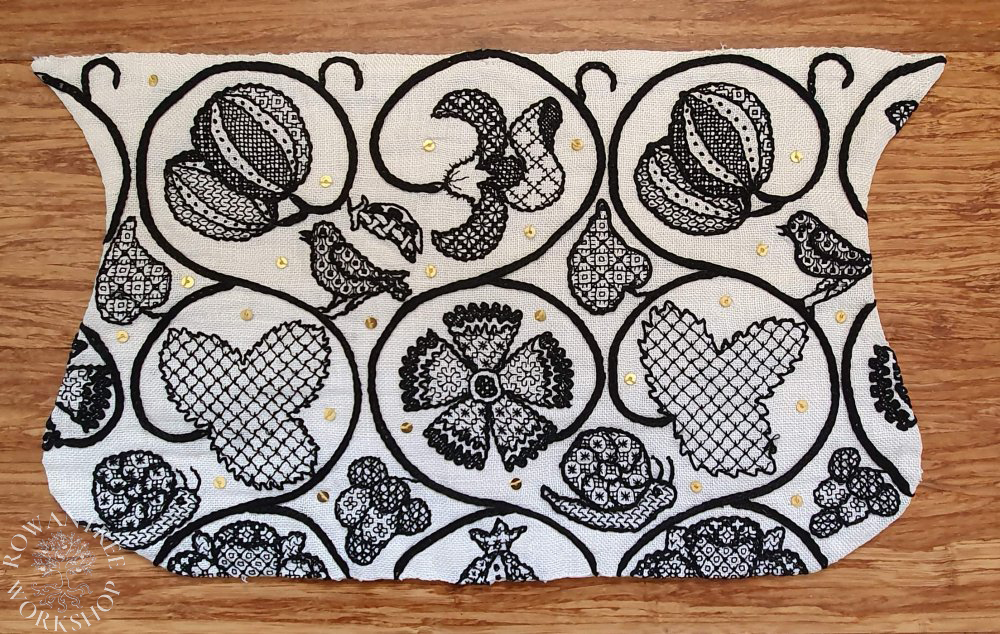
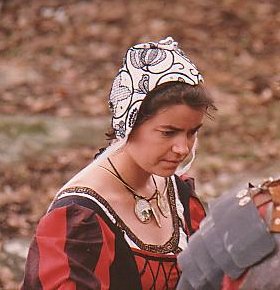
I wore the finished coif with everything – my Landsknecht garb, my middle class garb, even under a coronet! But once I started to look at German clothing in more detail, I realised it was just not appropriate, so I retired it from active use.
Afterthoughts
In later years, I was able to get real gold spangles, so I replaced the sequins – much better. Once I learned how these caps were actually made and worn, I unpicked the cap and re-sewed it with a gathered top, adding a casing and drawstring.
With the increased information now available, it is clear that these caps were not lined. Caps do get dirty in use, so either their did not wear them often, or they were washed frequently (Blackwork does wash well), or perhaps they were worn with a plain cap underneath.
I am still pleased with the work done by my much younger self. These days I would make some different choices with both design and materials, but it is still a nice piece.

